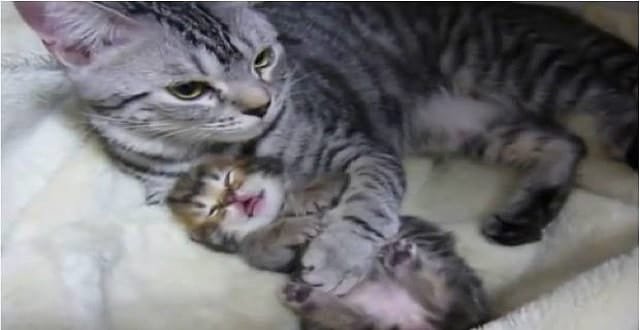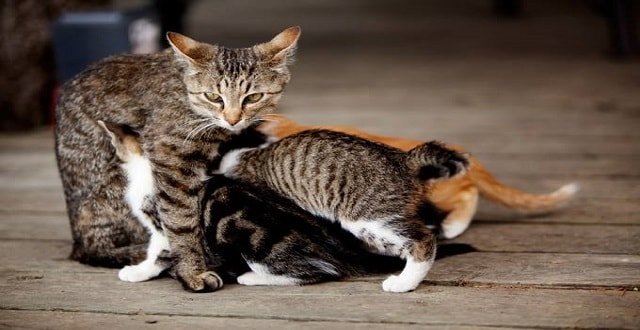Female domestic cats actually adjust their response to kitten calls depending on how urgent they sound, according to a study published in the open access journal BMC Evolutionary Biology.
Independent of their own experience of raising small kittens, female cats distinguish between kitten calls that convey different levels of urgency and react accordingly, researchers at Hannover Medical School and the University of Veterinary Medicine Hannover, Germany have discovered. Male cats simply do not adjust their response in similar ways.
This study is the first of its kind to examine if in non-human mammals such as domestic cats where fathers do not take part in raising their young, males adjust their behavior in response to specific audio cues in the voice of their offspring. The researchers also examined this particular response in females, and whether females that had never raised offspring before showed similar behavioral adjustment.
The researchers found that female cats responded approximately 10 percent faster to kitten calls that conveyed high arousal — greater urgency — than to kitten calls that conveyed low arousal. This indicates that female cats, in the end, are able to evaluate the emotional content of kitten calls and that they adjust their motivation to respond accordingly. Male cats did not show a more urgent response at all to kitten calls that signified high arousal.
Wiebke Konerding, who is the first author of the study, stated: “Surprisingly, male and female cats did not differ in their overall responsiveness to low arousal calls, but female cats adjusted their responsiveness if the state of arousal changed.
Male cats did not do so. We were also surprised to find that prior experience at raising kittens was not necessary for female cats to respond differently to low and high arousal kitten calls.”
These results indicate that the ability to adjust their responses to the emotional cues of kitten calls is a deeply ingrained sex difference between male and female adult cats that is not triggered by experience, according to the researchers.
As male cats usually do not take part in raising their offspring, kitten calls and the urgency conveyed in them may not have the same relevance for them as for female cats. This might cause male and female cats to process what they hear differently. The auditory system in female cats may have evolved in such a way that is adapted to the specific properties of kitten calls, although further research is needed to find out if the auditory system in male domestic cats is physically different from that of females. Maternal but not paternal care in cats might also have influenced the evolution of sex-specific differences in emotional processes in male and female cats.
To assess just how the male or female sex of adult cats and the high or low arousal conveyed by kitten calls affected the adults’ response times, the researchers used 14 calls from seven kittens — four males and three females, nine to 11 days of age — were recorded in two different contexts:
Low arousal, in which a kitten was spatially separated from its mother and siblings for exactly three minutes and left undisturbed.
High arousal, in which a kitten was taken out of the nest box for three minutes lifted off the ground and then turned on its back.
The researchers had previously shown that high arousal kitten calls differ from low arousal ones for example in duration and also in pitch.
The researchers also performed acoustic analyses for the 14 selected kitten calls in order to confirm the previously found acoustic differences. The recorded calls were played to 17 adult cats — nine males and eight females, each aged one to eight years. To control for experience, just half of the females had not previously raised kittens.
Wiebke Konerding went on to explain: “We didn’t know whether these acoustic differences would be behaviorally meaningful — that is if they would trigger different responses in adult cats. We identified acoustic cues related to the fundamental frequency — the pitch — of the infant cry that correlated with how quickly the females responded. For example, they responded more quickly to faster changes in frequency.”
In order to compare experienced and inexperienced cats, only calls of unrelated kittens had been used. Further research will be needed to determine if cats are more sensitive to the familiar, individual signatures of their own offspring’s voices than to the voices of strange kittens.












